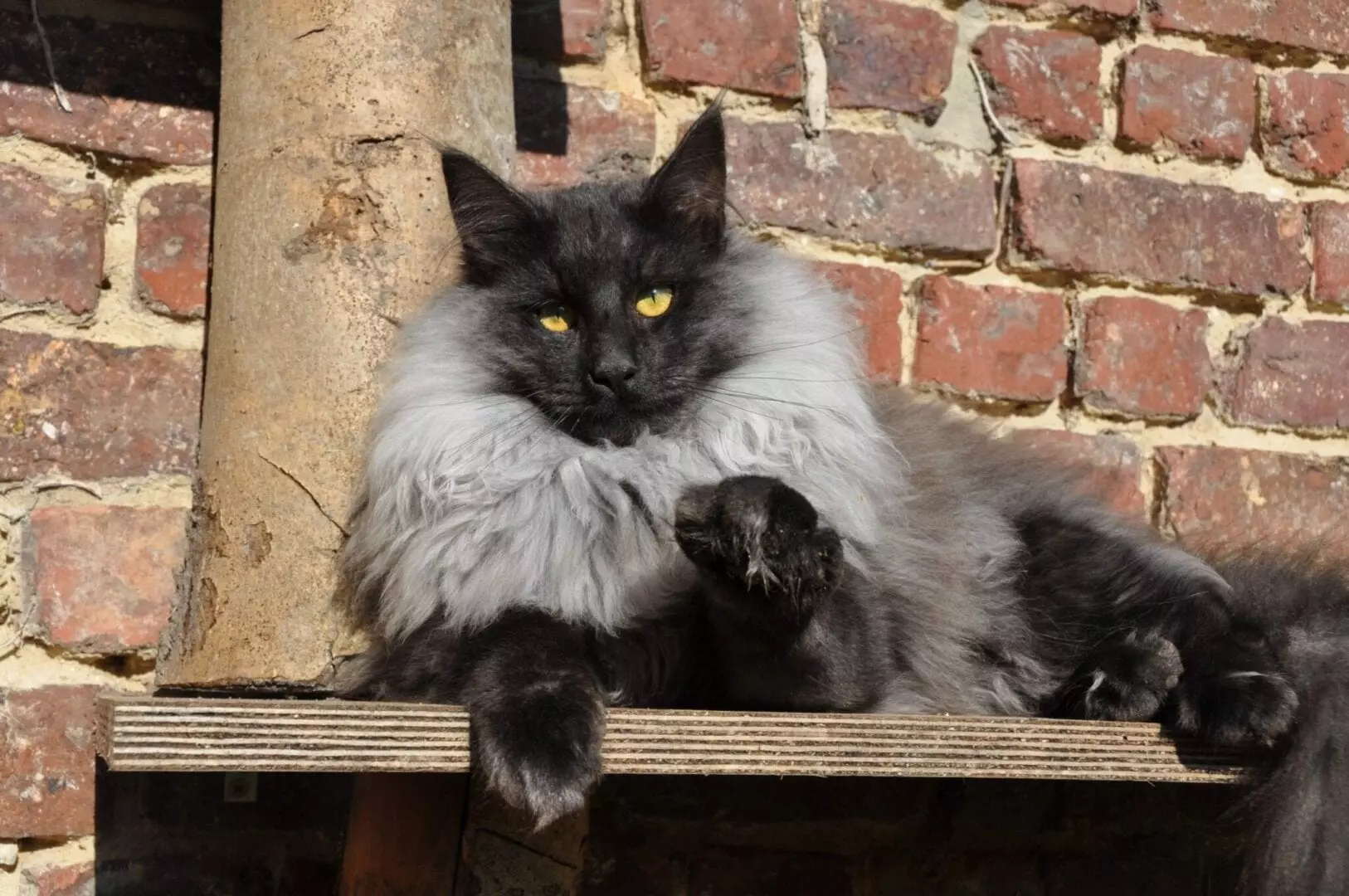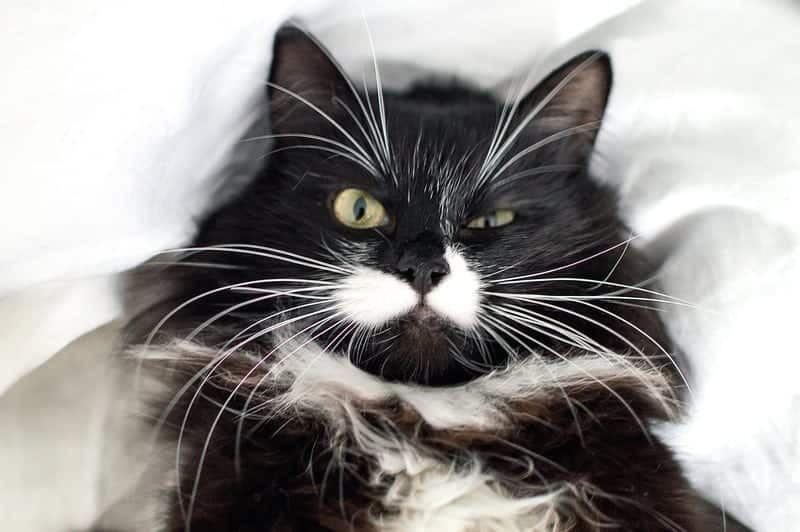For many cats which have black coats, they will often have white on their coats, too. Obviously cat coat genetics plays a role in this. Additionally, many cats which have black coats will also look as if they're wearing socks. These socks are relatively common on cats with mostly black coats, too. That's why you often see our tuxedo cats having them. But remember, tabbies can have them, too, it's just not as common as it is with black cats. 
Cat genetics are an amazing thing. Here I'll break down the three classifications of black and white cat coat patterns. Enjoy!
The Kings of Cattitude: Tuxedo Cats
In case you didn't know this term about these naturally fancy felines of the cat world, a tuxedo cat is a black and white cat with markings that make them appear as if they're permanently donning formal attire. But, keep in mind, not all black and white cats are true tuxedo cats. Additionally, cats who aren't black can also be tuxedo cats, too. For example, there are gray tuxedo cats and even tabby tuxedo cats. Depending on the markings that the cat has, their feet and belly will be predominately white, and the white will travel up the neck and often leave a mask marking on the face of the cat. If you're still not sure exactly what a proper tuxedo cat is, just take a look at Pepper, a purrfect tuxedo cat in true form below. 
Cow Cats: Just Don't Try to Milk Them!
I don't know about you, but I think cow cats are just super, duper fun to look at. These cool black and white cats get their name from their spotted coat which resembles that of a dairy cow's coat. Have you ever seen a Harlequin Great Dane before? Their coat is somewhat similar in appearance, too. Coat genetics are an amazing thing. And while our feline's big cat cousins will have spots, it's rare to see a cat with spots. (And you'll never see a wildcat with socks, either! ) For our domesticated felines, typically it is stripes or patches that you'll see. The distinctive markings that are unique to each cat begin while the cat is still an embryo. 
Bicolor: AKA Piebald Black and White Cats
So, when it comes to piebaldism, cats are not the only animals that experience this interesting bicolor pattern. With bicolor cats, they are not considered true tuxedo cats because their coats don't have the formal wear appearance. Dr. Karen Becker of Mercola Healthy Pets explains that piebald patches are the result of an entirely random process. And, as I mentioned above, cats aren't the only ones to experience this dual pattern phenomenon. You can also find snakes, horses, birds, and dogs which have piebald patterns on their skin/coat. If you look closely underneath your black and white cat's fur, the fur which is white will not be pigmented; the fur which is dark will have pigmented skin. The Turkish Van is considered a piebald. And their pattern is truly unique to their breed, as featured below. Notice the black only on the tail and the head. The Turkish Van can also come in orange and white with the same specific markings. 
Did you learn anything new and interesting about our feline friends? Don't forget to share this article with other cat lovers so that they can learn something, too!
Want to read about the rarest cat coats and patterns for felines? Check out them out here on cattitudedaily.com.






